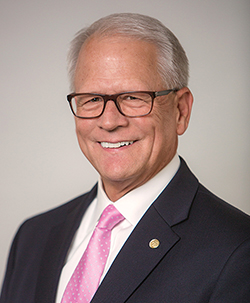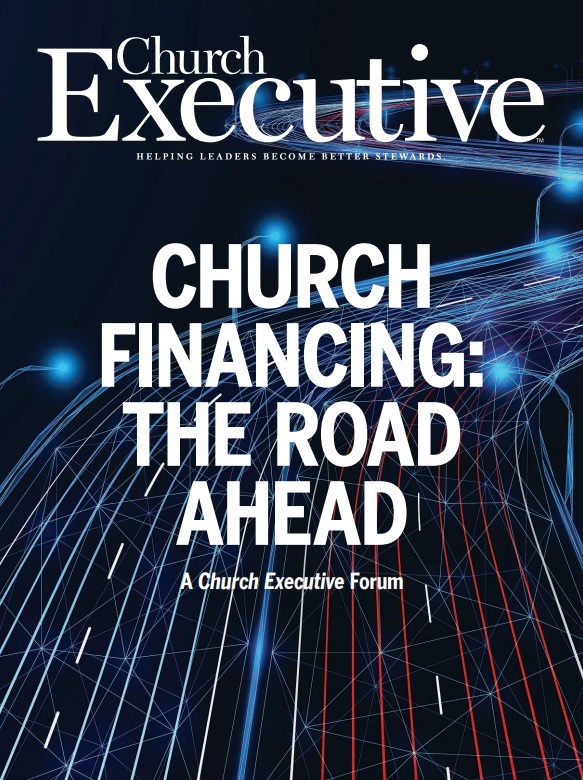

By Jerry Vaughan
“Debt” isn’t a popular word in churches. As church lenders and people of faith ourselves, we understand: it’s difficult to preach about being debt-free and then turn around and borrow money for a building project.
So when cautioned against committing too heavily to raising funds ahead of construction — compared to financing some of those costs upfront — we “get” the skepticism.
Given today’s environment of rising construction costs and sky-high inflation, however, our rationale is proven out. Here’s why.

Chief Lending Officer
WatersEdge
Shifting goalposts: A church was planning to add an education building. When the church leaders reached out to me, the project cost was $3 million. They’d committed to the congregation that the church would raise half of the total amount and finance the remainder.
The church did raise the $1.5 million, but it took two years. When leaders circled back to their architect and contractor, inflation had increased the project cost to $4 million.
Still committed to the original goal, it took the church six months to raise another $500,000. By that time, project costs had risen again — to $5 million. Church leaders ultimately asked the architect to engineer $1 million in costs out of the new building. The only way to do this was by substantially shrinking its footprint.
Putting off the inevitable: Since late last year, I’ve been talking with another church whose project is estimated at $13 million. When we connected, leaders had yet to start a capital campaign. The fundraising goal was $3 million — about twice the church’s yearly budget — a metric most capital campaign firms consider doable.
Raising these funds would take nine months. The church wanted to kick off the campaign by February 2022. As such, it would be November before church leaders even approached their architect to start designing. Further, they wouldn’t break ground until mid-2023.
I cautioned church leaders that the $13-million project would probably cost closer to $15 million by the time of groundbreaking — and that was before inflation started raging. (Right now, some contractors won’t even quote prices until they take delivery of materials.)
Knowing the church could likely raise $3 million at any point, I posed that it might make more sense to start planning the project at $13 million, and borrow the rest upfront, rather than wait for the project to cost millions more. Otherwise, roughly $2 million of the $3 million the church could raise would be eaten up by inflation.

Ultimately, they decided to stay the course and wait to build. Had they borrowed instead, they’d break ground about a year earlier and save the $2-million cost increase. As-is, the church will likely be forced to scale back the project scope when the time comes.
How did this happen — and can it be avoided?
Generally, with every year you wait to build, material and labor costs increase the cost of a project by 15% to 20%. Knowing this, if you can borrow money at 5%, doesn’t it make more sense to do so than to incur those inflation costs?
Generally, most church leaders aim to raise 25%, 33% or 50% of the total project cost, but this doesn’t happen overnight — it often takes two to three years. The best time to enlist a lender, then, is when the church has received some fairly accurate cost estimates for its project — even before the project is out for bid, since an architect can usually provide accurate cost estimates.
“Generally, with every year you wait to build, material and labor costs increase the cost of a project by 15% to 20%. Knowing this, if you can borrow money at 5%, doesn’t it make more sense to do so than to incur those inflation costs?”
Put simply, a construction project is really just an equation: A (the expected cost) – B (the funds on hand and/or likely to be raised) + C (the amount of financing needed). So, if a church is planning a $5 million project, has $1 million on hand and plans to raise another $1 million, it will need $3 million of financing.
Often, a church will also need to secure financing for a portion of the project to bridge the receivables of campaign pledges.
In the best-case scenario, the lender is enlisted at the very front end of a project before any plans are drawn up. This way, church leaders can know upfront how much the church will qualify to borrow. With this figure in hand — plus a realistic capital fundraising goal — the church can essentially say to its architect, “The cost of this project can’t exceed X.”
Don’t get me wrong: I believe a church should raise building project funds. Even so, financing can be your friend, not your enemy, if enough funds can’t be raised within six months. If a church saves 15% to 20% of increased material costs over a one- or two-year period, then it’s actually borrowing money to save money. As long as the amount financed isn’t burdensome, that’s just good stewardship.
Jerry Vaughan is Chief Lending Officer at WatersEdge Ministry Services. WatersEdge supports hundreds of Christian causes across the United States and around the world. Through biblically grounded giving solutions and ministry-focused financial services, the organization helps individuals, families, churches and ministries transform lives with the Gospel of Jesus Christ.


